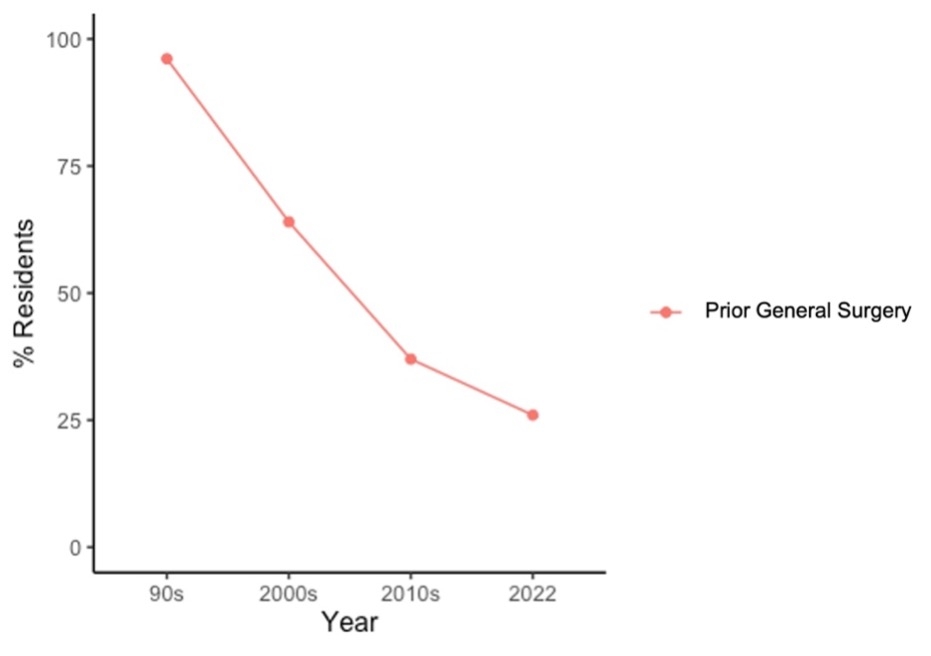The Evolving Plastic Surgery Applicant: How Far Have We Come in 30 Years?
Sofia Perez Otero*, Kshipra Hemal, Carter J. Boyd, Katie Weichman, Oriana Cohen, Vishal Thanik, Daniel J. Ceradini
Hansjörg Wyss Department of Plastic Surgery, New York University Grossman School of Medicine, NYU Langone Health, New York, NY
Plastic surgery training has undergone a tremendous paradigm shift in transitioning from an independent model to an integrated one. This study assesses how this shift has affected the applicant pool.
Data on applicant demographics and academic qualifications was extracted from multiple sources including the National Resident Matching Program (NRMP), the American Association of Medical Colleges (AAMC), and various cross-sectional surveys of plastic surgery applicants for the years 2005, 2011, and 2022. This data was compared to historical data from a 1992 survey of plastic surgery applicants using chi-square test and pairwise z-tests.
In 1992, the average age of plastic surgery applicants was 31 compared to 27 in 2011. Male residents predominated in 1992 (86% vs. 14%), but a more even distribution between men and women was observed in 2011 and 2022 (54% vs. 46% for both, p < 0.001). White applicants decreased from 73% in 1992 to 55% in 2011, and 53% in 2022. While there was an increase in Asian (7% -> 17% -> 20%) and Other (13% -> 14% -> 21%) applicants over time, the proportion of Black applicants remained stagnant (5% -> 6% - > 8%, p<0.05).
The percentage of applicants who had prior general surgery experience declined precipitously over the years: 96% in 1992, 64% in 2005, 37% in 2011, and 26% in 2022 (p<0.001). AOA status changed significantly between 1992 and 2005 (12% to 22%, p<0.05), but did not change considerably in 2011 (36%) and 2022 (23%).
Applicants with at least one publication changed dramatically over the years, from 43% in 1992 to 75% in 2005 to 89% in 2011, and 99% in 2022 (p<0.001). Applicant interest in academic plastic surgery did not change considerably over the years, from 35% in 1992 to 53% in 2005 to 42% in 2022 (p=0.15).
Over the last 30 years, there have been shifts in the demographic and academic qualifications of plastic surgery applicants. Understanding the evolving trends in residency application cycles is critical to review and identify areas of improvement in the field.

Back to 2023 Abstracts


